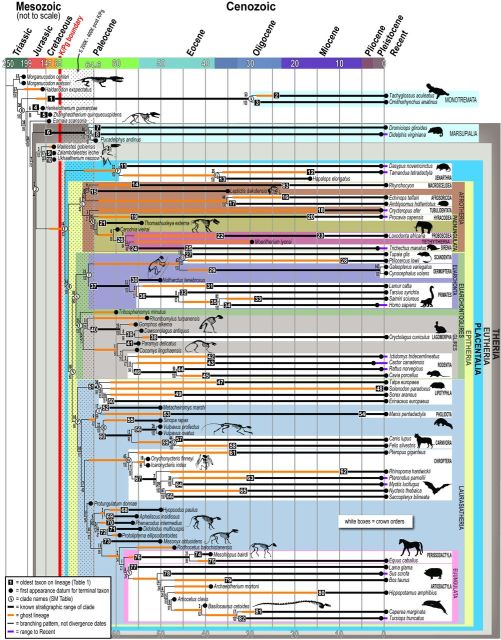|
|
Phylogenetics |
| Systematics |
Phylogenetics |
Phylogenetics
Phylogenetics is one of the two main branches of systematic biology today, the other being taxonomy. In the broad definition Phylogenetics is the science of reconstructing of the evolutionary tree of life on Earth (the phylogeny of life), which means it includes everyone from Lamarck, Darwin, and Haeckel upto current workers in the field. Phylogenetics as currently defined and practiced involves the practice of computational cladistics (morphological data matrices) and molecular sequencing, either alone or combined, in order to arrive at the best phylogenetic hypotheses out of the various possible evolutionary trees. There is however a tendency, whenever the resolved trees from each are found to be incongruent, for the tree topology of molecular phylogeny to be preferred, and the cladistic trees constrained to follow molecular lines. MAK130324
Phylogenetic analyses have become essential in researching the evolutionary tree of life. The overall goal of National Science Foundation's Assembling the Tree of Life activity (AToL) is to resolve evolutionary relationships for large groups of organisms throughout the history of life, with the research often involving large teams working across institutions and disciplines. Investigators are typically supported for projects in data acquisition, analysis, algorithm development and dissemination in computational phylogenetics and phyloinformatics. For example, RedToL aims at reconstructing the Red Algal Tree of Life. - Wikipedia
A current trend in phylogenetics is towards a large scale Total Evidence approach, resolving both molecular and morphological data in the same cladistic analysis, testing both parsimony and maximum likelihood trees, and calibrating the nodes by using the first fossil appearances. So for example the placental mammal radiation can be shown to post-date the extinction of the dinosaurs (O'Leary et al 2013) (see phylogenetic tree - a combination of cladogram and chrongram - at top of page), in contrast to both molecular-only calibration and earlier morphological trees, both of which placed the placental radiation deep in the Cretaceous. MAK130324
page MAK111014, edited RFVS111203, last modified MAK130324
